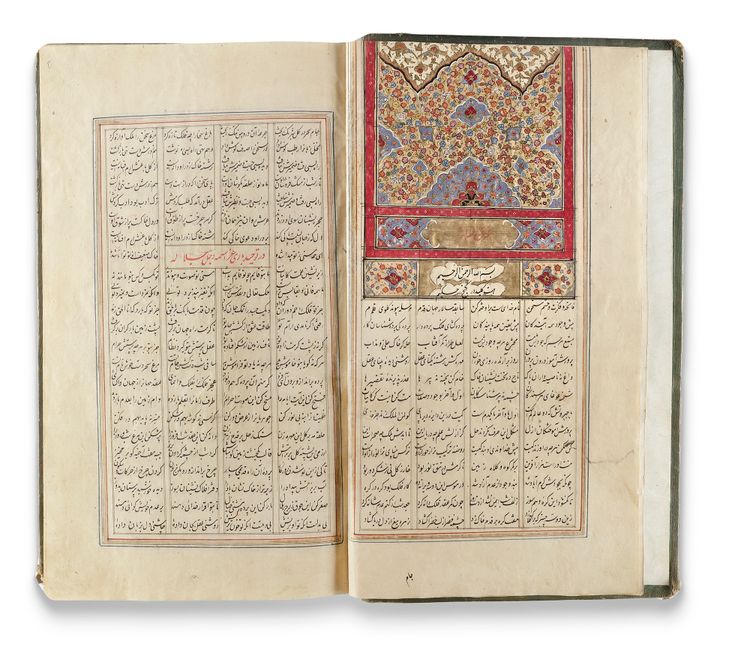NIZAMI(D.1290), KHAMSA, COPIED BY HASAN IBN ALI, SAFAVID PERSIA,17TH CENTURY
Persian manuscript on paper, 598ff. with 3 fly-leaves, each page with 23 ll.text arranged in 4 columns, written in fine nasta'liq script in black ink, ruled in red, green, gold and blue, titles in red ink, with eight paintings, five polychrome and gold headings, three title page missing, in a green morocco leather binding with stamped decoration.
18.5 by 29.5 cm.
The manuscript begins with the Makhzan al-Asrar (The Treasury or Storehouse of Mysteries), lacking its beginning and title page, and continues with Khusraw and Shirin, Layla and Majnun, Haft Paykar (The Seven Beauties), and the Iskandarnameh, divided in the Sarafnameh and the Iqbalnameh.
The subjects of the miniatures remaining in the present manuscript are as follows:
From Khusraw and Shirin:
Shirin in a landscape (2)
Farhad brought before Khusraw
Khusraw spies on Shirin
From Haft Paykar
From the Iskandarnameh
Catalogue note:
Nizami Ganjavi (c. 1141–1209)
This celebrated quintet of Persian narrative poems—known as the Khamsa (“Five Treasures”)—represents the pinnacle of medieval Persian literary and artistic achievement. Composed in elegant rhyming couplets, Nizami’s Khamsa became a foundational model for later poets and a favored subject for richly illustrated manuscripts across the Persianate world.
Makhzan al-Asrar (The Treasury of Mysteries): A didactic, mystical work of moral reflections and Sufi-inflected allegories.
Khusraw and Shirin: A romantic epic recounting the love of the Sasanian king Khusraw II for the spirited Armenian princess Shirin.
Layla and Majnun: A poignant tale of unfulfilled, spiritual love, where passion leads to divine madness.
Haft Paykar (The Seven Beauties): A cosmological romance: King Bahram Gur visits seven pavilions, each linked to a day of the week, color, and planetary deity, hearing a tale from each princess.
Iskandarnameh (The Book of Alexander): A two-part philosophical epic—Sharafnameh and Iqbalnameh—depicting Alexander the Great as conqueror, seeker of wisdom, and prophet-king.








